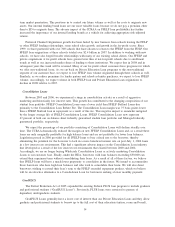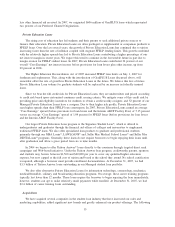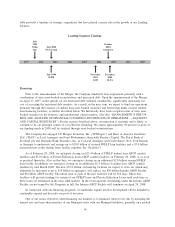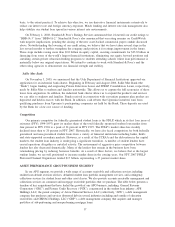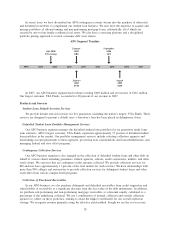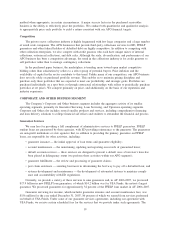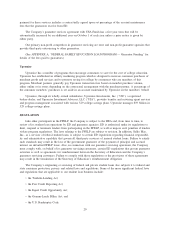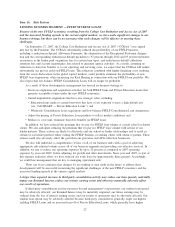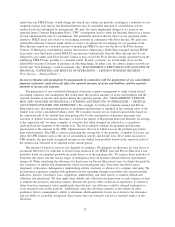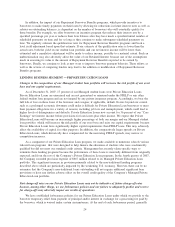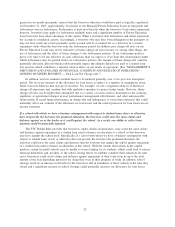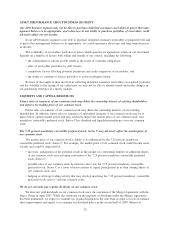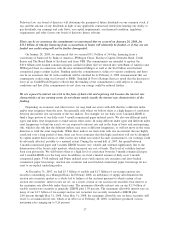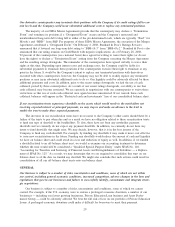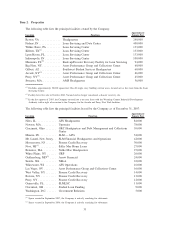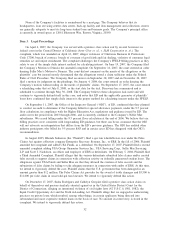Sallie Mae 2007 Annual Report Download - page 25
Download and view the complete annual report
Please find page 25 of the 2007 Sallie Mae annual report below. You can navigate through the pages in the report by either clicking on the pages listed below, or by using the keyword search tool below to find specific information within the annual report.In addition, the impact of our Repayment Borrower Benefits programs, which provide incentives to
borrowers to make timely payments on their loans by allowing for reductions in future interest rates as well as
rebates on outstanding balances, is dependent on the number of borrowers who will eventually qualify for
these benefits. For example, we offer borrowers an incentive program that reduces their interest rate by a
specified percentage per year or reduces their loan balance after they have made a specified initial number of
scheduled payments on time and for so long as they continue to make subsequent scheduled payments on
time. We regularly estimate the qualification rates for Repayment Borrower Benefits programs and book a
level yield adjustment based upon that estimate. If our estimate of the qualification rates is lower than the
actual rates, both the yield on our student loan portfolio and our net interest income will be lower than
estimated and a cumulative adjustment will be made to reduce income, possibly to a material extent. Such an
underestimation may also adversely affect the value of our Retained Interest because one of the assumptions
made in assessing its value is the amount of Repayment Borrower Benefits expected to be earned by
borrowers. Finally, we continue to look at new ways to improve borrower payment behavior. These efforts as
well as the actions of competing lenders may lead to the addition or modification of Repayment Borrower
Benefits programs.
LENDING BUSINESS SEGMENT — PRIVATE EDUCATION LOANS
Changes in the composition of our Managed student loan portfolio will increase the risk profile of our asset
base and our capital requirements.
As of December 31, 2007, 17 percent of our Managed student loans were Private Education Loans.
Private Education Loans are unsecured and are not guaranteed or reinsured under the FFELP or any other
federal student loan program and are not insured by any private insurance program. Accordingly, we bear the
full risk of loss on these loans if the borrower and cosigner, if applicable, default. Events beyond our control
such as a prolonged economic downturn could make it difficult for Private Education Loan borrowers to meet
their payment obligations for a variety of reasons, including job loss and unemployment, which could lead to
higher levels of delinquencies and defaults. Private Education Loans now account for 36 percent of our “Core
Earnings” net interest income before provisions for loan losses plus other income. We expect that Private
Education Loans will become an increasingly higher percentage of both our margin and our Managed student
loan portfolio, which will increase the risk profile of our asset base and raise our capital requirements because
Private Education Loans have significantly higher capital requirements than FFELP loans. This may adversely
affect the availability of capital for other purposes. In addition, the comparatively larger spreads on Private
Education Loans, which historically have compensated for the narrowing FFELP spreads, may narrow as
competition increases.
As a component of our Private Education Loan program, we made available to numerous schools various
tailored loan programs that were designed to help finance the education of students who were academically
qualified but did not meet our standard credit criteria. Management has recently taken specific steps to
terminate these lending programs because the performance of these loans is materially different from originally
expected, and from the rest of the Company’s Private Education Loan programs. In the fourth quarter of 2007,
the Company recorded provision expense of $667 million related to its Managed Private Education Loan
portfolio. This significant increase in provision primarily related to the non-traditional lending programs
described above which are particularly impacted by the weakening U.S. economy. However, there can be no
assurance that the Company’s non-traditional loans outstanding will not require additional significant loan
provisions or have any further adverse effect on the overall credit quality of the Company’s Managed Private
Education Loan portfolio.
Past charge-off rates on our Private Education Loans may not be indicative of future charge-off rates
because, among other things, we use forbearance policies and our failure to adequately predict and reserve
for charge-offs may adversely impact our results of operations.
We have established forbearance policies for our Private Education Loans under which we provide to the
borrower temporary relief from payment of principal and/or interest in exchange for a processing fee paid by
the borrower, which is waived under certain circumstances. At the end of each forbearance period, generally
24


